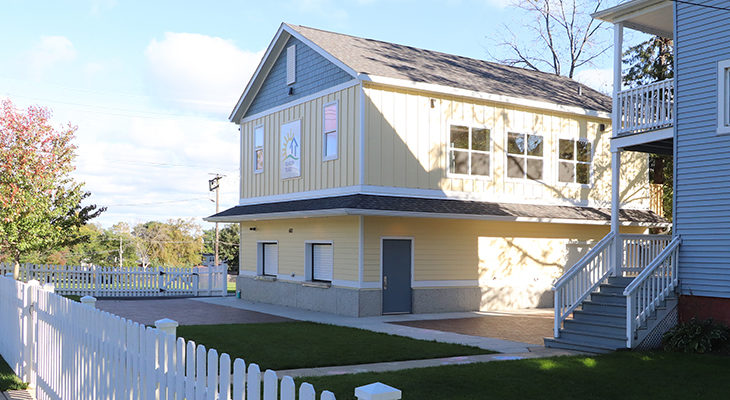
Annex helps Beacon Place community center serve more Waukegan families
In 2012, a small group of humanitarians set out to bring more educational opportunities to economically disadvantaged families in Waukegan, Illinois. They renovated a three-story home to create a neighborhood community center. Thus was born Beacon Place.
Word spread. More first through twelfth graders enrolled in after-school and summer enrichment programs at the “big blue house.” More parents attended the organization’s ESL and health programs. More volunteers came. Programs expanded.
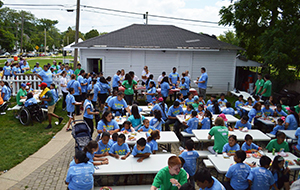
Soon, Beacon Place ran out of space to meet the needs of its expanding enrollment. The biggest shortcoming was a tiny garage that the organization used for storage and food distribution. The nearly 100-year-old facility—it still had the tracks from the carriage doors—was crumbling and too small.
Today, the garage is gone and the big blue house on McCalister Avenue has a bright yellow counterpart: a 2,400-square-foot annex that offers more program and storage space. Legat Architects, which was founded in Waukegan in 1964, donated design services for the annex. In October, 2017, the firm hosted an Oktoberfest-themed ShareFest that raised over $5,200 for Beacon Place. Joseph J. Henderson & Son donated general contracting services.
The numbers tell the story of the new building’s impact: during the time that the facility was under construction, child enrollment grew from 80 to 130. To date, approximately 2,500 children and adults have been impacted by programs offered by Beacon Place. This summer alone, nearly 300 children and 80 parents enjoyed programs that focused on education and enrichment, nutrition, fitness, and building healthy lifestyles.
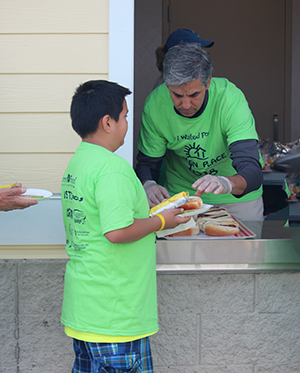
The annex’s first floor houses a lunch preparation area with refrigerators and a freezer, a large room for Beacon Place’s backpack program, and storage space for outdoor equipment. The second floor has a multipurpose room and offices, while a basement allows for much-needed storage of additional supplies and equipment.
Finding shelter during weather events was a major challenge before the annex was built. If a storm struck, Beacon Place would have to pack 100 kids and 50 volunteers into the blue building and the small garage. It was chaotic and difficult to pull off. Now that the campus has expanded, everyone gets in much faster.
Additionally, the dirt excavated for the annex’s foundation was used to create more green space at the adjacent park, used by Beacon Place kids and community members.
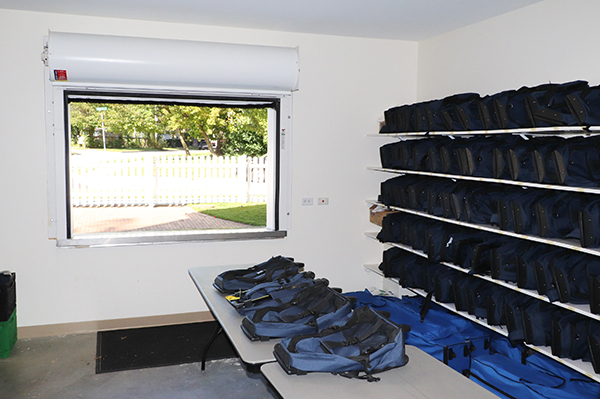
First Floor: Storage and Food Distribution
More than 350 backpacks line the shelves within one of the annex’s first-floor storage spaces. Each week during the summer, volunteers stuff these backpacks with donated food for kids to take home to their families. The adjacent lunch distribution space has a movable table and more backpack shelving.
Two serving counters on the exterior wall not only let staff hand out backpacks and donated boxed lunches—over 3,000 meals each summer—to kids outside, but also fill the interior with light.
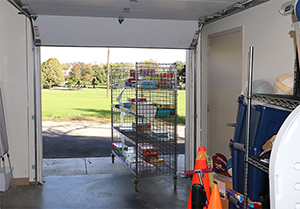
A larger general storage area supports Beacon Place’s summer camp program. Volunteers wheel games and equipment through a garage door. It is a noticeable difference from before, when they either had to squeeze the equipment through a tight door then contend with broken pavement, or risk bumping their heads as they ascended from the basement of the blue house.
Beacon Place also uses the annex’s ground level as classroom space for its art program and moms’ ESL group.
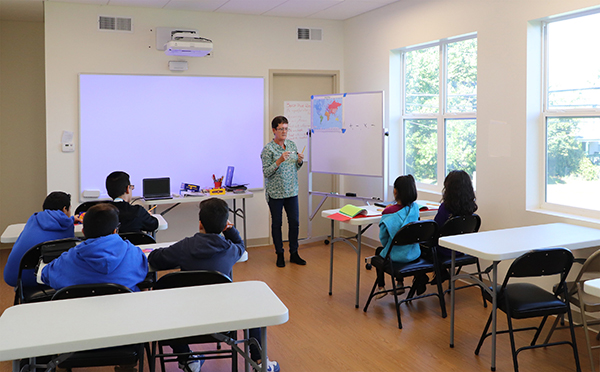
Second Floor: Academic Enrichment
The annex’s upper level houses two multipurpose classrooms with smartboards, as well as storage and small office space. A soundproof divider between the classrooms opens to create one larger space for guest visits, student performances, and parent programs.
Classroom activities range from fifth graders enjoying afternoon tea and discussing English traditions as part of Beacon Place’s “Where in the World . . .” program to Parent University, where parents learn strategies for helping their children at school. This summer, the classrooms played a key role as Beacon Place combated summer learning loss among low-income students—135 students spent two days a week doing fun educational projects such as exploring water pollution in the Great Lakes and creating chemistry experiments.
The new classrooms have helped reduce crowding in the original blue building. “There’s more bright space and the kids don’t feel like they’re on top of one another,” said volunteer Morag Bishop. “They can focus much better.”
Additionally, because mostly older kids use the newer classrooms, younger students look forward to “graduating” to the yellow building after spending years in the older blue facility.
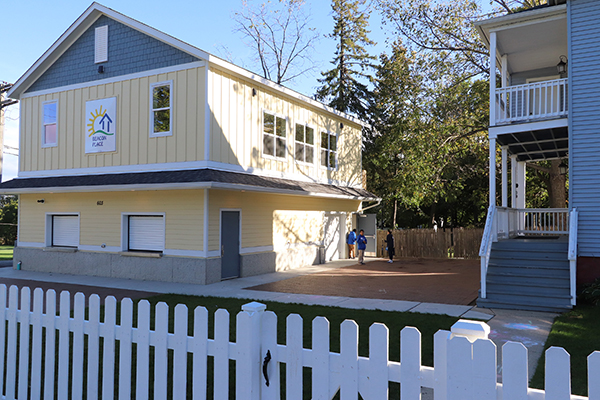
A Gift and an Example
Beacon Place founder and board member Peggy Talbot pointed out the “cultural isolation and limited opportunities for enrichment among low-income families.” This disparity is what motivated Beacon Place to open its doors in 2012 and, more recently, to expand its campus.
The annex became a welcome addition in a neighborhood where new construction is rare. During construction, the same families that benefit from Beacon Place programs helped clean up after construction crews and even dug up the old patio’s bricks and hauled them out to the curb to ready the site for new bricks. Additionally, many community members driving by during construction stopped and asked questions.
“The building is not just a gift to the community,” said Talbot, “but it also exemplifies our mission in action by showing we have the courage to envision a brighter future and lean on people for support to make it happen.”
Contact us with design opportunities for your community or comment below to share your thoughts on this post.


